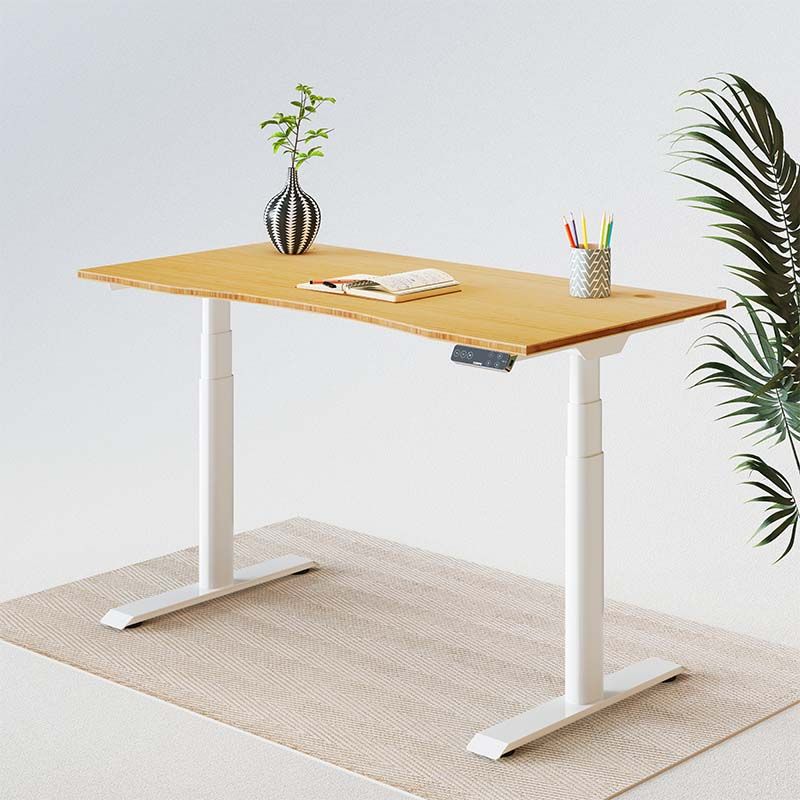Why is sustainable office furniture the way to go, you might ask? Not only will eco-friendly furniture reduce your environmental impact and help you avoid harmful Volatile Organic Compounds (VOCs), you will also save money in the long run as sustainable design aims to increase a product’s lifespan so they don’t need replacing as often.
With 8.5 million tonnes of office furniture ending up in landfills across the US every year, it’s time to start thinking seriously about the green credentials of our furniture.
#1 Research
All purchase journeys should begin with some serious research. Many companies claim to be eco-friendly, but often have little in the way of specific information about what makes their products sustainable.
Start by asking some key questions to ensure your purchases are genuinely sustainable:
- Does the company use recyclable and recycled materials?
- Are the materials used environmentally-friendly and sourced sustainably?
- Are the materials sourced locally? Is production done locally?
- Are any hazardous materials or environment-damaging chemicals used in the production process?
- Is minimal packaging used? Is the packaging recyclable and recycled?
- What is the lifespan of their products? Do they offer a repair service?
#2 Materials
Find out about the materials used to make the product. Opt for reclaimed or recycled materials, like wood, glass and iron. Some companies even use factory wood scraps or flawed wood pieces to make truly sustainable designs. Consider the type of wood used - slow-growing trees like oak are a far less sustainable option than bamboo which grows more quickly and can be even more durable.

FlexiSpot’s Standing Desk E8 with bamboo top
Choosing the wrong materials can actually have an impact on your health and result in an increase in indoor pollution. Check the VOC emissions of potential buys to ensure your new furniture isn’t hiding any toxic elements.
#3 Carbon Footprint
Items made and transported with a lower carbon footprint are your best friend.
To get an understanding of the carbon footprint of your furniture piece, research the method and distance of transportation. Also, consider the production and labour methods used to make your product.
Many companies also offer carbon offsetting, such as tree-planting. However, don’t let this alone decide where you buy your furniture - while many companies are genuinely working towards true sustainability, some offer tree-planting schemes to greenwash over other environmentally-damaging practices.
#4 Go Flat Pack
Whether you have traumatic memories of constructing flat-pack furniture or actually enjoy the challenge, it cannot be denied that the clever design of flat pack furniture allows for a reduction in packaging. Opting for flat pack also means that the environmental cost of transportation is reduced as companies can carry more furniture in a single truck.
Many companies offer ingenious flat-pack design which combines these environmental benefits with the ease of a simple construction process for the buyer.
#5 Upcycle
While green credentials like low carbon footprints and recyclable symbols go some way towards improving sustainability, it is always better to not buy new at all.
Not only will upcycling or buying second-hand furniture save you money, you will experience the smug pride of having saved cast-offs from the landfill.
Upcycled furniture can look stylish and be simply upgraded to minimise any flaws, for example by sanding down and repainting a wooden desk or by using self-adhesive wallpaper to brighten up a dull shelving unit.

#6 Lifespan
Sustainability involves thinking about the full lifecycle of your furniture - from construction to destruction.
Products which have long guarantee periods, positive long-term reviews and repair services indicate a long and sustainable life.
Avoid pieces which look poorly made, seem too cheap, or feel designed to follow fast fashion trends and be disposed of quickly.
Paying a little more to ensure quality, durability and longevity means your furniture will remain in use for much longer, thus offsetting its carbon footprint and ultimately costing you less in the long term.
#7 Donate
It may seem counterintuitive, but when shopping for new office furniture it’s important to plan what will happen at the end of its life with you.
Shop with companies that offer buy-back incentives on their old products, seek out pieces which can be recycled, or find places in your local area which will take donated furniture. Schools, start-ups, nonprofits and charities are always looking for free or discounted office furniture.
As you shop around for new sustainable office furniture, think about recycling or donating your old furniture too.
Final tips to make your office more sustainable:
- Unplug unused appliances and turn off the lights when rooms are vacant;
- Go paperless where possible and use recycled paper where you can’t;
- Ensure you have recycle bins which are clearly labelled with what they can and can’t take;
- Bring the outside in with indoor plants;
- Collect food waste for composting;
Ditch single use plastics - no more plastic plates and cups!